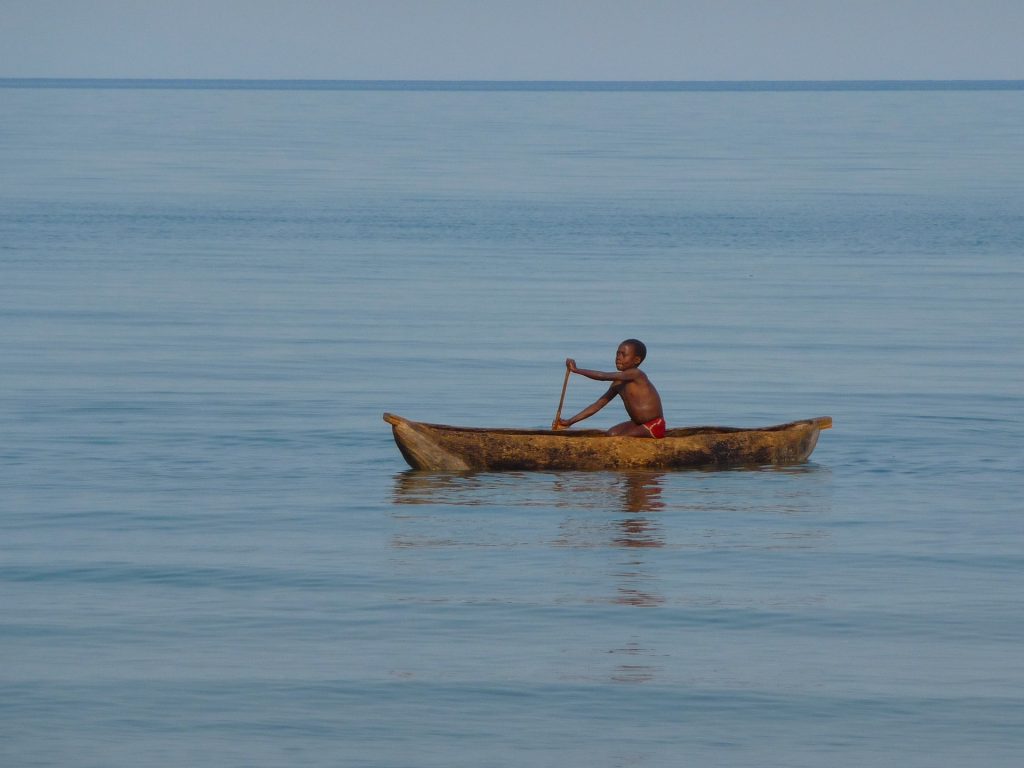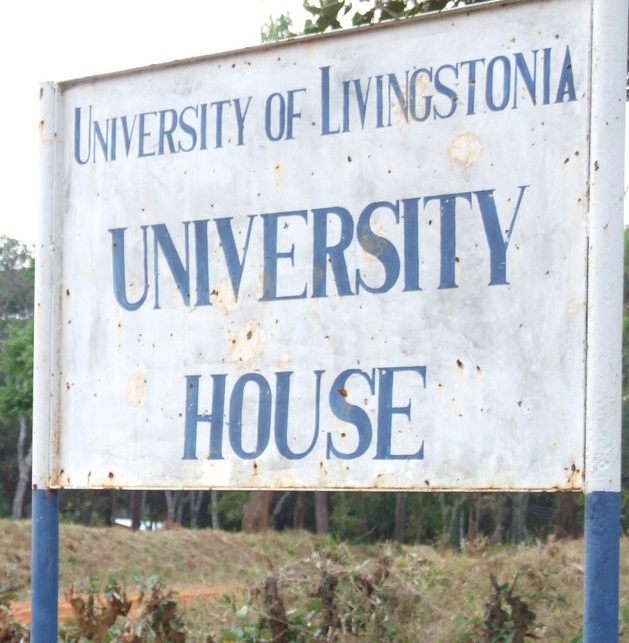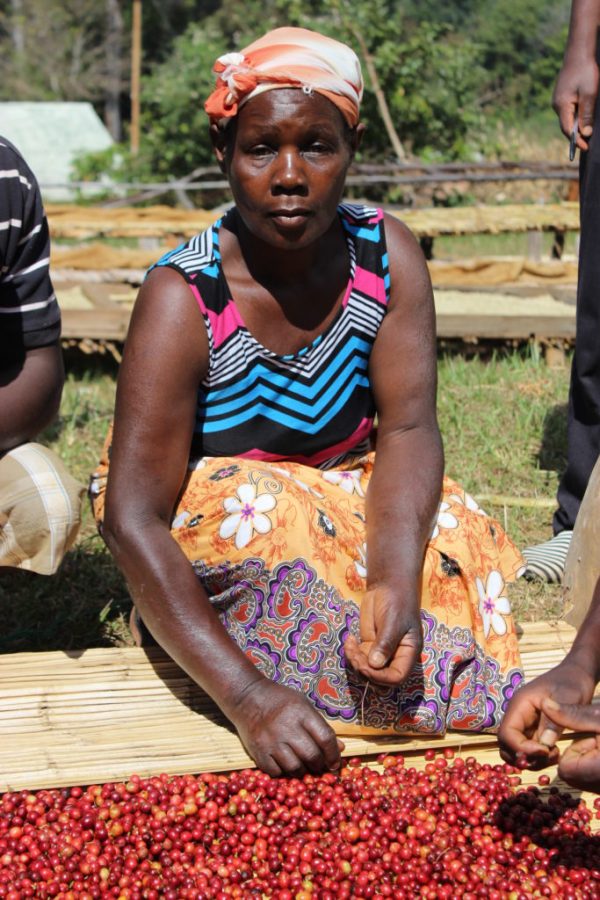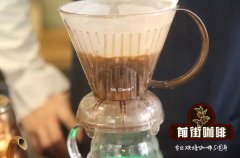A brief History of Malawian Coffee by Lake Malawi _ what coffee producing areas are there in Malawi?
Professional coffee knowledge exchange more coffee bean information please follow the coffee workshop (Wechat official account cafe_style)
Malawi is a landlocked country, although it does not look like a landlocked country. Malawi has a total land area of 118000 square kilometers, which is only about 2/3 the size of Guangdong Province, but has more than 40, 000 square kilometers of water area-1/3 of Malawi's land area is occupied by Lake Lake Malawi, one of the largest lakes in the world. Lake Malawi ranks fourth in terms of volume and eighth in surface area. The lake is home to more fish than any other lake in the world, and the highlands on the northeast shore of Lake Malawi are the main place where coffee is grown.

If you stand on the other side of Lake Malawi, there is another coffee producer, Tanzania, which is called Lake Niassa. But once you step into the water, you are nominally cross-border. Because this waterline is the boundary between the two countries. This often disputed boundary line was drawn between Britain and Germany during the colonial period of 1890 to carve up the land. Then, in World War I, Britain and Germany even had a real naval battle in this lake-yes, a naval battle between gunboats and gunships. You should have guessed.
Like most landlocked African countries, European explorers did not discover the land until after the mid-19th century, the British colonist D. Livingston reached the Lake Malawi area four times from 1858 to 1863. He called the place Lake Niassa-"Niassa" is not an English name, but a local dialect, meaning. Lake, so the former name of Lake Malawi "Lake Niassa" means "Lake Lake"? (inexplicable joy)

Of course, actually D. Livingston kept a hand in the naming. At that time, he also gave Lake Malawi two nicknames: one was "Star Lake", because from a distance, the lights of fishing boats at night looked like stars, and the other was "Storm Lake". Because he had experienced a particularly ferocious storm near the lake shore. In fact, every year between May and August in Malawi, there is a strong southeast wind that makes the lake uneasy. Locals call it "mwera".
Like Rwanda, Burundi, Tanzania and eastern Zambia, Malawi is part of the Great Rift Valley, which means high elevations and volcanic soil in terms of geology and caffeine. In terms of coffee, Malawi also has a mixed and somewhat contradictory history with these countries.

Coffee first came to Malawi in 1878 and was grown by local farmers and Europeans, but Malawian coffee production and export did not take shape until the 1950s when seeds were distributed by the government to encourage the cultivation of coffee as a cash crop for export. The work focuses on farmers in Misuku Hills, the northernmost highland bordering Tanzania. Many small farmers began to grow coffee. In 1957, they set up the Misuku coffee growers' cooperative, which is still in operation.
In southern Malawi-- by D. What Livingston calls the "Shire Plateau", or "Shire Heights", has several large coffee plantations; but in central and northern Malawi, coffee is grown mainly by small farmers who have a long tradition of forming cooperatives, six of which form a larger "farmers' union", called Mzuzu, in the town where the processing plant is located not far from the shores of Malawi's lake. Among the six members of the Mzuzu Coffee Cooperative is the Misuku Coffee Growers'Co-operative, which produces about half of Mzuzu coffee. In Misuku Mountain, coffee grows mainly in soil clay between 1700 and 2000 meters above sea level.

Twenty-five per cent of coffee farmers in the Mzuzu alliance are women. The stated goal of the Mzuzu Alliance is to "improve the quality of life of member farmers through sustainable farmers' organizations by promoting sustainable development, production, processing and marketing technologies." Mzuzu is Fairtrade certified and hopes that every smallholder coffee grower will succeed in achieving the following goals:
Decent accommodation: iron roof, cement floor, wall dusting, good ventilation.
Food security: three decent meals a day.
Plenty of warmth: provide decent clothes and plenty of bedding for the family.
Education: send all children to decent schools.
To achieve these simple but critical goals in one of the poorest countries in the world.

Compared with tobacco, sugar and tea, Malawian coffee production has been small, less than 5 per cent of exports, but as professional markets focus on quality production, coffee production is increasing and farmers are being encouraged by rising prices.
Translated from: olamspecialtycoffee.
END
Important Notice :
前街咖啡 FrontStreet Coffee has moved to new addredd:
FrontStreet Coffee Address: 315,Donghua East Road,GuangZhou
Tel:020 38364473
- Prev

More like alcoholic coffee Columbia San Jose barrel fermentation treatment water washing
Professional coffee knowledge exchange more coffee bean information please follow the coffee workshop (Wechat official account cafe_style) Colombian coffee San Jose rum barrel fermentation washing treatment Colombia San Jose Washed-flavor-rum, cantaloupe, dark chocolate Rum, Melon, Dark Chocolate country: Colombia / Colombia producing area: Calda
- Next

Ethiopia's Guji Mormora Devil Farm introduces the flavor of Ethiopian Guji coffee.
Professional coffee knowledge exchange more coffee bean information please follow the coffee workshop (Wechat official account cafe_style) Ethiopia District is divided into four levels, from large to small order is Region, Zone, woreda, kebele, most of the raw coffee bean names follow this rule to do naming, this launch of Guji-Shakeso is located in the well-known producing area southeast of Sheffield.
Related
- Does Rose Summer choose Blue, Green or Red? Detailed explanation of Rose Summer Coffee plots and Classification in Panamanian Jade Manor
- What is the difference between the origin, producing area, processing plant, cooperative and manor of coffee beans?
- How fine does the espresso powder fit? how to grind the espresso?
- Sca coffee roasting degree color card coffee roasting degree 8 roasting color values what do you mean?
- The practice of lattes: how to make lattes at home
- Introduction to Indonesian Fine Coffee beans-- Java Coffee producing area of Indonesian Arabica Coffee
- How much will the flavor of light and medium roasted rose summer be expressed? What baking level is rose summer suitable for?
- Introduction to the characteristics of washing, sun-drying or wet-planing coffee commonly used in Mantenin, Indonesia
- Price characteristics of Arabica Coffee Bean Starbucks introduction to Manning Coffee Bean Taste producing area Variety Manor
- What is the authentic Yega flavor? What are the flavor characteristics of the really excellent Yejasuffi coffee beans?

